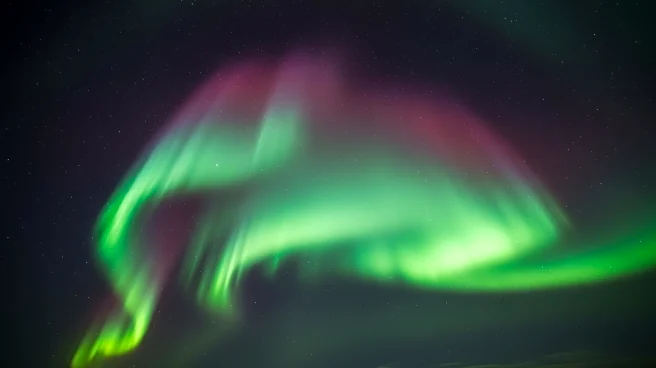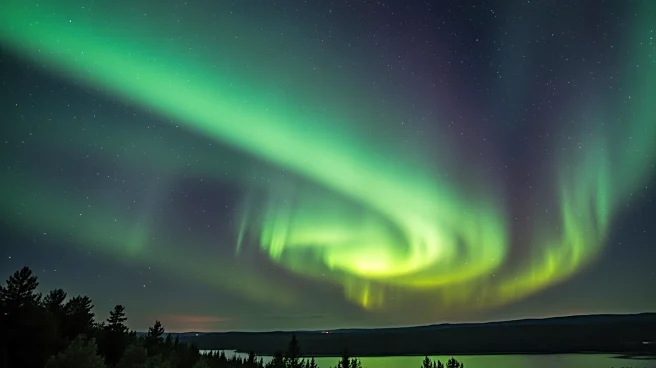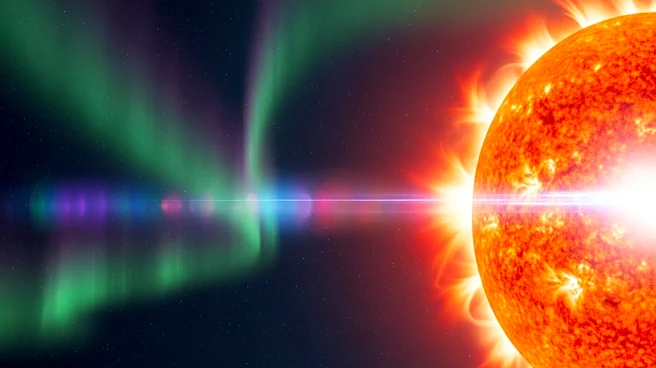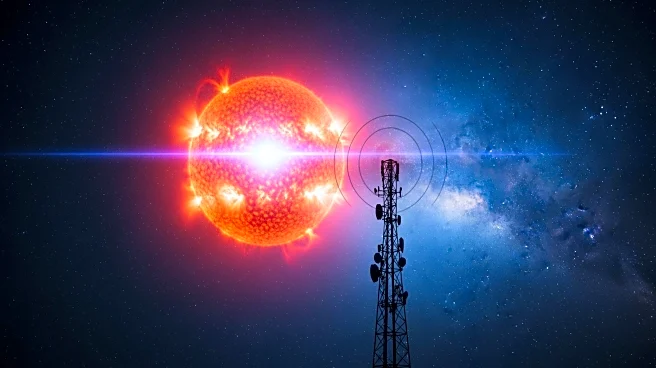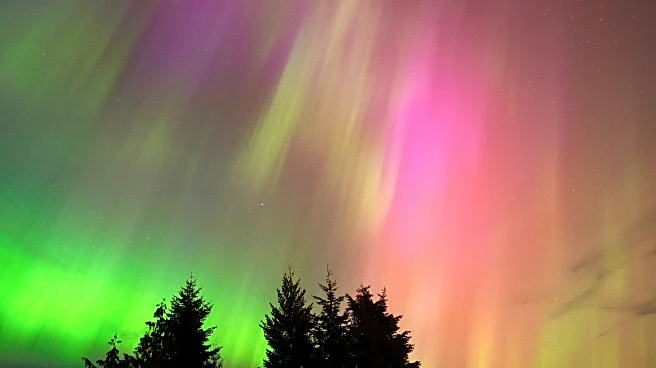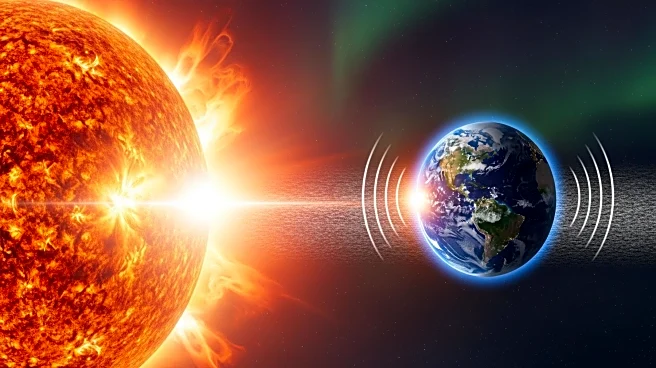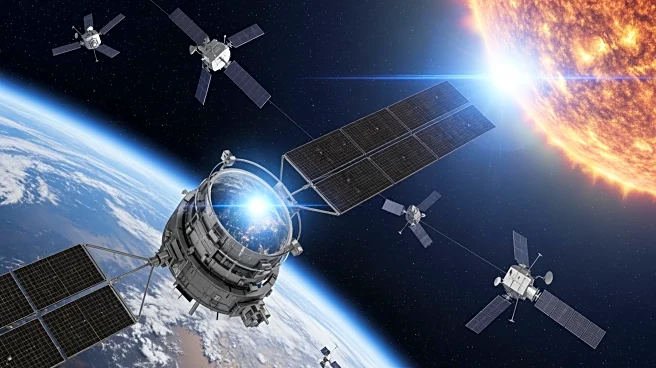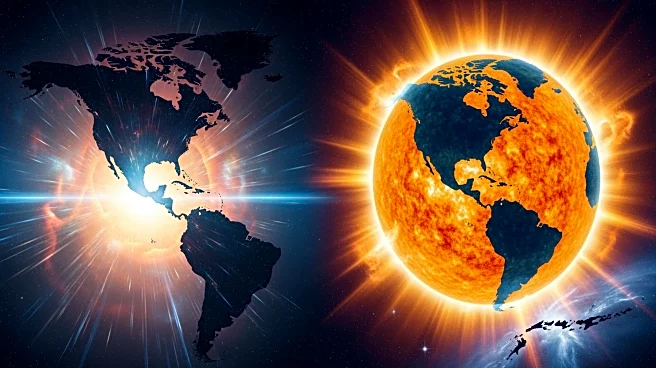What's Happening?
A powerful geomagnetic storm, classified as G3, unexpectedly illuminated the skies across the Northern Hemisphere, providing a spectacular aurora display visible from Canada to northern parts of North America.
The storm, which occurred overnight from November 5 to 6, surprised skywatchers with vibrant green, pink, and purple auroras. The NOAA's Space Weather Prediction Center has issued a G3 geomagnetic storm watch, indicating that aurora activity may continue as solar material continues to interact with Earth's magnetic field. Photographers and aurora enthusiasts have captured stunning images and videos of the event, showcasing the dynamic and colorful displays.
Why It's Important?
The occurrence of such geomagnetic storms and aurora displays highlights the dynamic nature of space weather and its impact on Earth. These events can affect satellite operations, GPS systems, and power grids, making it crucial for industries reliant on these technologies to monitor space weather conditions closely. The storm also provides an opportunity for scientific study, helping researchers understand the interactions between solar activity and Earth's magnetic field. Additionally, the aurora displays offer a unique cultural and aesthetic experience, drawing interest from photographers and skywatchers, and potentially boosting tourism in regions where the lights are visible.
What's Next?
With the geomagnetic storm watch in effect through November 8, further aurora displays are possible, encouraging enthusiasts to remain vigilant and prepared to capture more images. The ongoing solar activity may prompt additional advisories from space weather agencies, and industries affected by space weather will need to continue monitoring conditions to mitigate potential disruptions. Researchers may also use this event to gather data for future studies on geomagnetic storms and their effects.
Beyond the Headlines
The cultural significance of aurora displays extends beyond their scientific interest, as they are often associated with folklore and mythology in various cultures. The visibility of the northern lights in areas not typically known for such displays can inspire increased interest in astronomy and space science, potentially influencing educational programs and public engagement in these fields.


